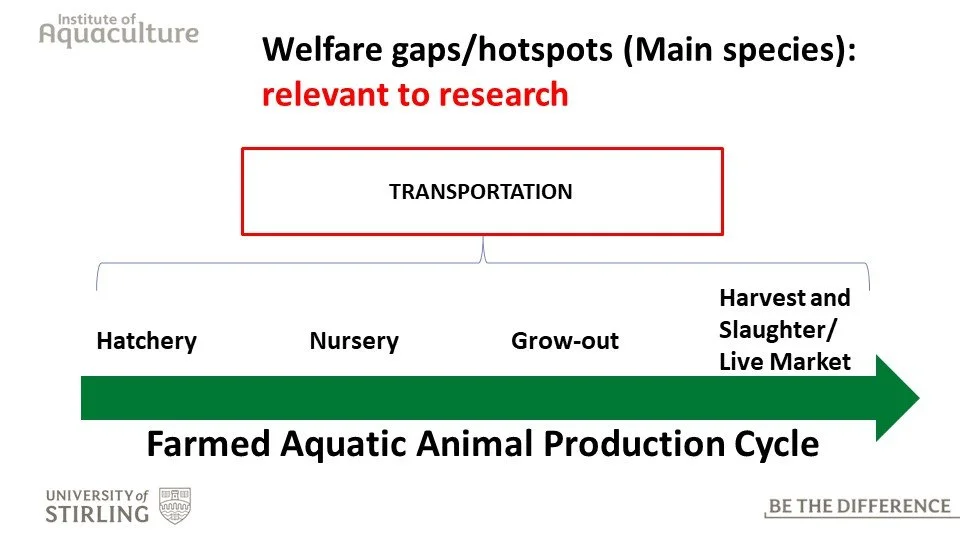During October 2023, David Little and Simão Zacarias undertook a series of field visits as part of an ongoing fish welfare “hotspot analysis” - aiming to identify where issues of greatest concern for fish welfare arise within the value chain - the stakeholders and locations concerned- and where there is the greatest potential for beneficial interventions. The visits included farms, transport, wholesale markets and retail outlets (as some fish are often sold live in Thailand and Vietnam).
The Farmed Fish Value Chain
Diagram of stakeholder importance and influence analysis
Initial Findings
On farms they identified various times and management scenarios where welfare might be compromised, and discussed the use of visual indicators, particularly behavioural, that might be easily applied.
Behavioural indicators can be a simple measure of welfare issues during the production phase.
The holding conditions for fish are often poor during live transport and in markets where fish are held live - although examples of good practice were also found. Different species of fish tend to be slaughtered at different points in the distribution chain with higher value fish most likely only slaughtered at the point of final sale or consumption. The use of pre-slaughter stunning is a key factor in welfare, so particular attention was paid to practices in different locations and for different species.
Live fish and shrimp in retail markets
More in depth data are currently being collected and final findings and outcome will be used to help define research priorities for the second call for research project proposals.





